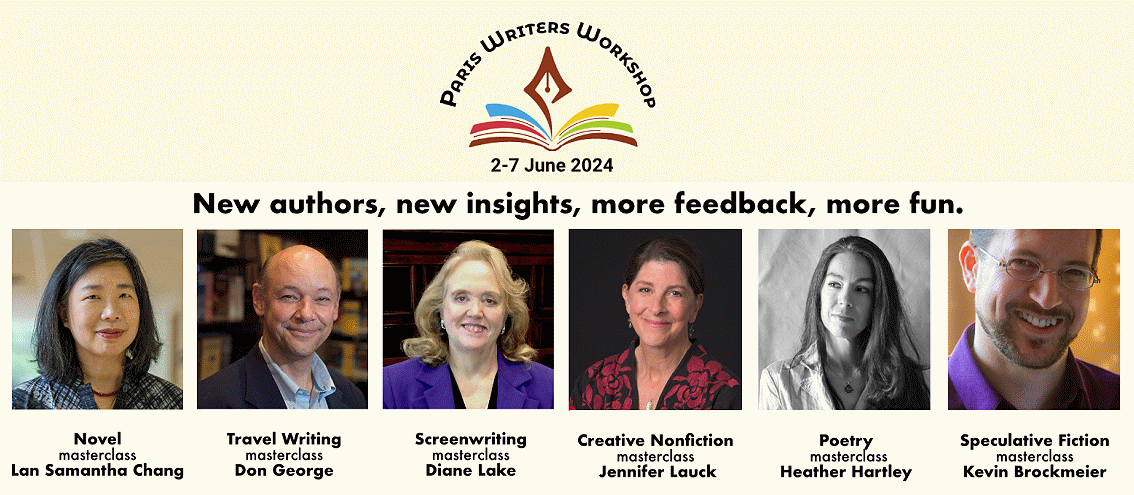
From Idea to Script to Sale





Before I get to today’s blog…
Thinking about doing more with your writing? Why not join me in Paris June 2-7 for my Masterclass in Screenwriting? Come be part of a dynamic community of writers and literary agents to learn, to write, to network, to energize your literary goals—and just to have fun in the City of Light!
The Paris Writers Workshop is the longest running literary program of its kind. This program offers 6 masterclasses by renowned authors, each a specialist in their field—and I’ll be teaching the Screenwriting Masterclass—in English, of course.
The workshop will be held at Columbia University’s beautiful Reid Hall campus in the heart of literary Paris—Montparnasse.
Registration is now open: https://wice-paris.org/paris-writers- workshop
We’ll have a great time getting your story ideas off the ground!!

Musicals—4
Last week, in comparing the ground-breaking The Jazz Singer [1927] with A Night at the Opera [1935] I noted that though The Jazz Singer changed movie history forever, A Night at the Opera, where the Marx brothers spent lots of time yucking it up, was way more popular. Does that mean laughs are the way to go when you’re writing a musical?
Not really. The reason there were probably more comedic musicals in the 30s in particular is that the US was in the middle of the Great Depression—and this sort of movie was what the public wanted… they wanted to forget their troubles and be cheered up. This trend continued with, in particular, Fred Astaire and Ginger Rogers movies.
The Gay Divorcee [1934] by George Marion, Jr., Dorothy Yost and Edward Kaufman has a plot based on mistaken identity that complicates Astaire and Rogers getting together. Here’s a clip of one of the dance numbers from the film: https://www.youtube.com/watch? v=x438BleiQsc. Interestingly, the Astaire/Rogers vehicle made the following year, Top Hat [1935] by Dwight Taylor and Allan Scott, is also about a case of mistaken identity. Here’s a memorable clip: https://www.youtube.com/watch?v=ILxo-TUkzOQ, and it’s a number where Fred Astaire takes the lead because although they both dance, he’s the only one who sings. But take a look at the lavish sets—and then think about the fact that most people were in the middle of the Depression and could barely afford to come to the movies. This kind of glamour was something they knew they’d never experience but it didn’t stop them from drooling over it. And in the next year the two would star in Swing Time [1936] by Howard Lindsay and Allan Scott, which had a plot with a little difference—while Astaire tries to gamble his way into raising money to marry his fiancée, he falls for an aspiring dancer—she would be a dancer, of course, because Astaire needed a partner! Here’s a fun clip: https://www.youtube.com/watch?v=mxPgplMujzQ. You’ll notice all the clips involve dancing, because that was a big part of these films—the driving force, in fact.
Why was that? Why all the dancing? You don’t see that today, do you? Certainly not to the extent you do in these Astaire/Rogers films. Why? Again, it was the 30s—a time before television. I don’t remember a time before television and you probably don’t either, but try and imagine it. What do you do every evening? Well, as you might have guessed, one of the things people did was go out dancing. Dancing was a much more popular pastime than it is today, hence a string of musicals with dance at the center was something everyone could relate to.
So as you think about writing your own musical, think about what you could do that could make audiences today relate to your film.
Sure, there’s a sameness in feel to these three Astaire/Rogers films, just as there is to the other seven they would make. Sure, they were formulaic, but in some ways, all musicals are. And these musicals of the thirties are all full of energy and the idea that love will triumph. The latter is certainly true of most musicals—including those in the 40s, and we’ll talk about a few of them next week.
Copyright © Diane Lake
18Aug19